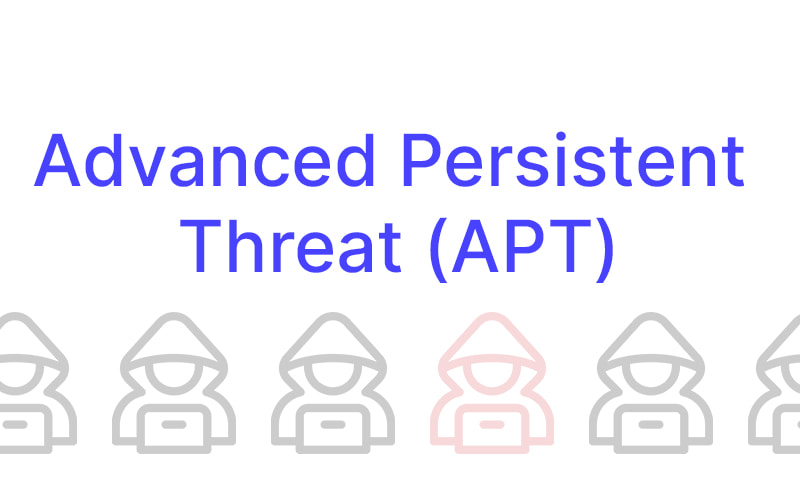Advanced Persistent Threats (APTs) are sophisticated cyber attacks that pose significant risks to organizations and individuals alike. These targeted and stealthy attacks are often carried out by well-funded and highly skilled adversaries, including state-sponsored actors and organized criminal groups. In this article, we will delve into the world of APTs, exploring their characteristics, life cycle, notable examples, motivations, prevention strategies, and future trends in APT defense.
Contents
Understanding Advanced Persistent Threats (APTs)

In today’s interconnected digital landscape, the prevalence of cyber threats continues to grow. While traditional cyber attacks are often opportunistic and short-lived, APTs take a different approach. APTs are relentless, patient, and persistent, aiming to infiltrate a target’s network, maintain long-term access, and exfiltrate sensitive data without detection. Understanding the nature of APTs is crucial for organizations and individuals seeking to protect themselves from these advanced adversaries.
At its core, an APT refers to a group or an individual who possesses the capability and intent to launch stealthy and targeted attacks against specific targets, compromising their networks and extracting valuable information. APTs often combine various techniques, including social engineering, zero-day exploits, and custom malware, to bypass traditional security measures and maintain their presence undetected.
Characteristics of APTs
These are some of the characteristics of APTS:
Stealth and Long-Term Persistence
One of the key characteristics of APTs is their ability to remain undetected for extended periods. APT actors meticulously plan their attacks, using sophisticated evasion techniques to bypass traditional security controls. By staying hidden, they can conduct reconnaissance, monitor their targets, and extract sensitive information without alerting the victim.
Targeted Attacks
Unlike generic cyber attacks, APTs specifically target selected organizations or individuals. These targets are chosen based on various factors such as their industry, geopolitical significance, or value of the information they possess. APTs invest time and resources in gathering intelligence about their targets, tailoring their attack techniques to exploit specific vulnerabilities and increase the likelihood of success.
Advanced Techniques and Tools
APTs employ advanced techniques and tools to carry out their attacks. They often leverage zero-day exploits, which are vulnerabilities unknown to the public or software vendors, giving them an advantage over traditional security measures. Additionally, APTs develop custom malware and use sophisticated encryption and obfuscation techniques to evade detection by antivirus software and intrusion detection systems.
The Life Cycle of an APT Attack

Understanding the life cycle of an APT attack helps organizations develop effective defense strategies. While the specific steps may vary, the general stages of an APT attack can be outlined as follows:
Reconnaissance
During the reconnaissance phase, APT actors gather information about their targets. This includes identifying potential vulnerabilities, mapping the target’s network infrastructure, and profiling key individuals within the organization. APTs may use publicly available information, social engineering, or even conduct physical surveillance to collect intelligence.
Initial Compromise
Once the reconnaissance phase is complete, APT actors initiate the attack by exploiting vulnerabilities within the target’s network or systems. This can involve the use of spear-phishing emails, watering hole attacks, or exploiting unpatched software vulnerabilities. The goal is to gain an initial foothold within the target’s infrastructure.
Establishing Foothold
After gaining initial access, APT actors work to establish a persistent presence within the compromised network. They deploy backdoors, rootkits, or other forms of malware to ensure access even if the initial compromise is detected and mitigated. This allows them to maintain control over the target’s systems and continue their activities undetected.
Escalation of Privileges
Once a foothold is established, APT actors seek to elevate their privileges within the target’s network. They exploit vulnerabilities or misconfigurations to gain administrative or high-level access, enabling them to move laterally within the network and access more valuable information.
Lateral Movement
With escalated privileges, APT actors move laterally within the target’s network, seeking out additional systems to compromise. They carefully navigate through the network, bypassing security controls and escalating their access privileges as they go. This allows them to explore different parts of the network and identify high-value targets or critical data.
Data Exfiltration
The ultimate goal of an APT attack is to exfiltrate valuable data from the target’s network. APT actors carefully select and extract sensitive information, using encryption or covert channels to avoid detection. The stolen data is then sent to command-and-control servers under the control of the attackers, from where it can be further exploited or sold on the black market.
Notable APT Groups and Examples
Numerous APT groups have gained notoriety over the years due to their sophisticated attacks and high-profile targets. Here are a few notable examples:
APT1 (Comment Crew)
APT1, also known as Comment Crew, is a Chinese-based APT group believed to be associated with the Chinese People’s Liberation Army (PLA). Also, APT1 has been linked to multiple targeted attacks against various industries, including aerospace, technology, and defense. Their activities primarily focus on cyber espionage and intellectual property theft.
APT29 (Cozy Bear)
APT29, also known as Cozy Bear, is a Russian-based APT group that gained widespread attention during the 2016 U.S. presidential election. The group is suspected of being involved in various cyber espionage campaigns, targeting government entities, think tanks, and critical infrastructure. APT29 is known for its advanced tactics, including the use of zero-day exploits and sophisticated social engineering techniques.
Equation Group
The Equation Group is a highly sophisticated APT group believed to be associated with a nation-state. This group has been attributed to the development and deployment of powerful cyber weapons and exploits, including the notorious Stuxnet worm. The Equation Group’s activities primarily focus on cyber espionage and surveillance.
Motivations Behind APT Attacks

Understanding the motivations behind APT attacks is crucial for comprehending their impact and developing effective defense strategies. Here are some common motivations driving APT actors:
State-Sponsored Espionage
One primary motivation for APT attacks is state-sponsored espionage. Nation-states seek to gather intelligence, monitor geopolitical activities, and gain a strategic advantage by infiltrating the networks of foreign governments, military organizations, and critical infrastructure sectors.
Intellectual Property Theft
APTs frequently target organizations to steal valuable intellectual property (IP). This can include proprietary technologies, trade secrets, research and development data, or sensitive business strategies. Intellectual property theft allows APT actors to gain a competitive edge or provide economic advantages to their sponsoring entities.
Financial Gain
Some APT attacks are motivated by financial gain. APT groups may target financial institutions, payment processors, or individuals with access to financial systems to carry out fraudulent activities, such as theft of funds, credit card information, or identity theft. These attacks can result in significant financial losses for individuals and organizations.
Political Agendas
APTs may be driven by political agendas, seeking to disrupt or manipulate political systems, elections, or public opinion. Such attacks can target government entities, political parties, or influential individuals, aiming to achieve specific geopolitical objectives or sow discord and instability.
APT Prevention and Mitigation Strategies
Protecting against APT attacks requires a multi-layered approach that combines technical measures, employee awareness, and proactive security practices. Here are some essential prevention and mitigation strategies:
Employee Awareness and Training
Educating employees about APTs and promoting a cybersecurity-aware culture is vital. Training programs should focus on recognizing phishing attempts, social engineering techniques, and the importance of strong passwords and secure online behavior. Regular awareness campaigns and simulated phishing exercises can help reinforce good security practices.
Strong Authentication and Access Controls
Implementing robust authentication mechanisms, such as multi-factor authentication (MFA), helps prevent unauthorized access to critical systems. Access controls should be based on the principle of least privilege, ensuring that employees only have access to the resources necessary for their roles.
Regular Patching and Updates
Keeping software, operating systems, and applications up to date with the latest security patches is crucial in mitigating known vulnerabilities. APT actors often exploit unpatched software as a means of initial compromise. Organizations should establish patch management processes to ensure timely updates across their infrastructure.
Network Segmentation
Segmenting networks into distinct security zones helps contain the impact of a potential APT attack. By isolating critical systems and data, organizations can limit lateral movement and prevent the rapid spread of an attack. Network segmentation also enables better monitoring and detection of suspicious activities within each zone.
Intrusion Detection and Response Systems
Deploying advanced intrusion detection and response systems is essential for detecting and mitigating APT attacks. These systems use behavioral analysis, threat intelligence feeds, and anomaly detection algorithms to identify unusual activities and potential indicators of compromise (IOCs). Prompt incident response and threat-hunting capabilities are crucial for effective APT defense.
The Role of Threat Intelligence in APT Defense

Threat intelligence plays a crucial role in APT defense. It involves collecting, analyzing, and sharing information about emerging threats, attack techniques, and indicators of compromise (IOCs). Here’s how threat intelligence aids in APT defense:
Proactive Monitoring and Detection
Threat intelligence enables organizations to proactively monitor their networks and systems for potential APT activities. By staying informed about the latest tactics and techniques employed by APT actors, organizations can deploy targeted monitoring solutions and detection mechanisms to identify suspicious behavior and indicators of an ongoing attack.
Indicators of Compromise (IOCs)
Threat intelligence provides valuable IOCs that help organizations identify signs of compromise. IOCs include IP addresses, domain names, file hashes, and patterns of behavior associated with known APT campaigns. By integrating IOCs into security systems and continuously monitoring their presence, organizations can quickly detect and respond to APT attacks.
Sharing Information and Collaborative Efforts
Threat intelligence encourages information sharing and collaborative efforts among organizations, security vendors, and industry forums. By sharing anonymized data, indicators, and insights, the collective defense against APTs is strengthened. Collaborative efforts enable the identification of broader attack patterns and the development of effective countermeasures.
Conclusion
In conclusion, the battle against APTs is an ongoing challenge, but with the right combination of technical measures, employee awareness, and collaborative efforts, organizations can significantly reduce their risk of falling victim to these persistent and targeted cyber threats.
If you are looking to implement any of the Infosec compliance frameworks such as SOC 2 compliance, HIPAA, ISO 27001, and GDPR compliance, Impanix can help. Book a Free consultation call with our experts or email us at [email protected] for inquiries.
